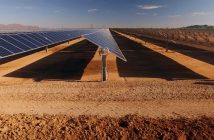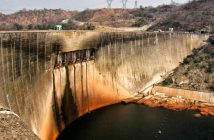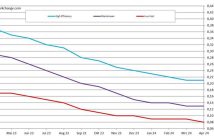- The new concept of the Desertec initiative, which was presented at the Energy Transition in the Arab World Conference in Berlin last week, is still based on the idea that large-scale solar and wind energy can be developed and used in the deserts of the Middle East and North Africa.
- It also includes, however, that hydrogen and other synthetic emission-free energy carriers can also be developed throughout the region with clean energy and then exported to world markets.
A powerhouse to the world – this is what the Desertec initiative now promises to become, 10 years after it was launched.
The Desertec Industrial Initiative presented this new concept together with its partners – including State Grid Corp. of China, Acwa Power, Innogy, ABB and Siemens – at the Energy Transition in the Arab World conference last week in Berlin. Representatives of governments, regulators and utilities from countries such as Morocco, Algeria, Egypt, Saudi Arabia, and Jordan were also on hand.

“The old Desertec was conceived to bring renewable energy from the deserts of the MENA region to Europe in only one direction,” Dii CEO Paul van Son told pv magazine.
This is the pre-history of the Desertec initiative, Van Son said, as it has completely changed its goals over the past decade.
“First of all, we thought it was important to help these regions have their own renewable energy development, so that they can have their own CO2-free energy. And this is what happened,” he explained.
On the other hand, huge PV plants and a number of concentrated solar power (CSP) projects have been tendered, built or are being developed in countries such as Egypt, Tunisia, Algeria, Morocco, Saudi Arabia, the United Arab Emirates, and Oman. And the very low prices at which they are being built which shows that the original idea of developing desert energy remains valid.
Desertec 3.0
What is really new here is the idea that it’s not just large-scale solar and wind energy that can be developed and used locally. Hydrogen and other synthetic emission-free energy carriers can also be developed by using cheap solar and wind capacity on a huge scale in the desert. “We now prefer to speak about green electrons and green molecules from the desert,” Van Son said.
Van Son explained that Dii evolved from Desertec 1.0, which meant power from the deserts to Europe, to Desertec 2.0, under which emission-free energy was produced locally. The initiative is now moving toward Desertec 3.0, under which green electrons and molecules will be produced locally, but also for a range of overseas energy markets – not just for Europe or Germany.
“Desertec is not a single project,” Van Son clarified. “We are market enablers and our mission is to help create the conditions to make projects and infrastructure doable. The main goal is now emission-free energy supply in MENA and an energy exchange with Europe and the world.”
Energy-carrying molecules
This means that the deserts of MENA should be connected via new or existing power and gas infrastructure, or by marine transport with Europe, from North Africa t0 Sub-Saharan Africa, and from the Middle East to India, Iran and Pakistan. The transport of green molecules to world markets – hydrogen, methanol and methane – could then be done like it is for LNG and other fossil fuels.
Over the past 10 years, the Desertec initiative has also undergone a technological shift from CSP, which was considered more suitable for high desert temperatures at the time, to PV and wind, which now show stronger potential in terms of costs reductions.
“But I prefer to think in other terms. Energy must be produced with zero emissions, and it is all about this. The geographic position of the MENA region is perfect for energy trade, regardless of whether it is made with green electrons or green molecules,” Van Son said.
According to Ad van Wijk – an independent energy entrepreneur and part-time professor of future energy systems at TU Delft – a crucial element of the new Desertec concept will be the creation of a joint hydrogen economy between Europe and North Africa.
“We have the chance to build a European energy system based 50% on green electricity and 50% on green hydrogen, and this can be done in mutual cooperation with North Africa for the benefit of both,” he said at the Berlin conference, while acknowledging that such an ambitious goal will require huge political and societal support across a number of countries.
Challenges vs. potential
Despite the Desertec initiative’s resilience, it still needs to address several challenges, including fears of political instability, a lack of clear targets, resistance from oil and gas producers, state-controlled energy markets, and regulations that include local content requirements, among others.
But the fact that the initiative keep attracting new stakeholders – and the solid organization built up by the Dii – seems to validate the idea that developing desert energy remains a valid proposition. This is especially true now that several European countries – including Germany, Italy, the United Kingdom and the Netherlands – are struggling to find suitable and cheap surfaces on which to build new solar and wind projects.
Above all, the almost unlimited amount of land and extraordinary solar resources of the MENA region are impossible to ignore in the face of the energy transition. However, it remains to be seen when the energy industry will finally become fully aware of this potential.
Author: Emiliano Bellini
This article was originally published in pv magazine and is republished with permission.











